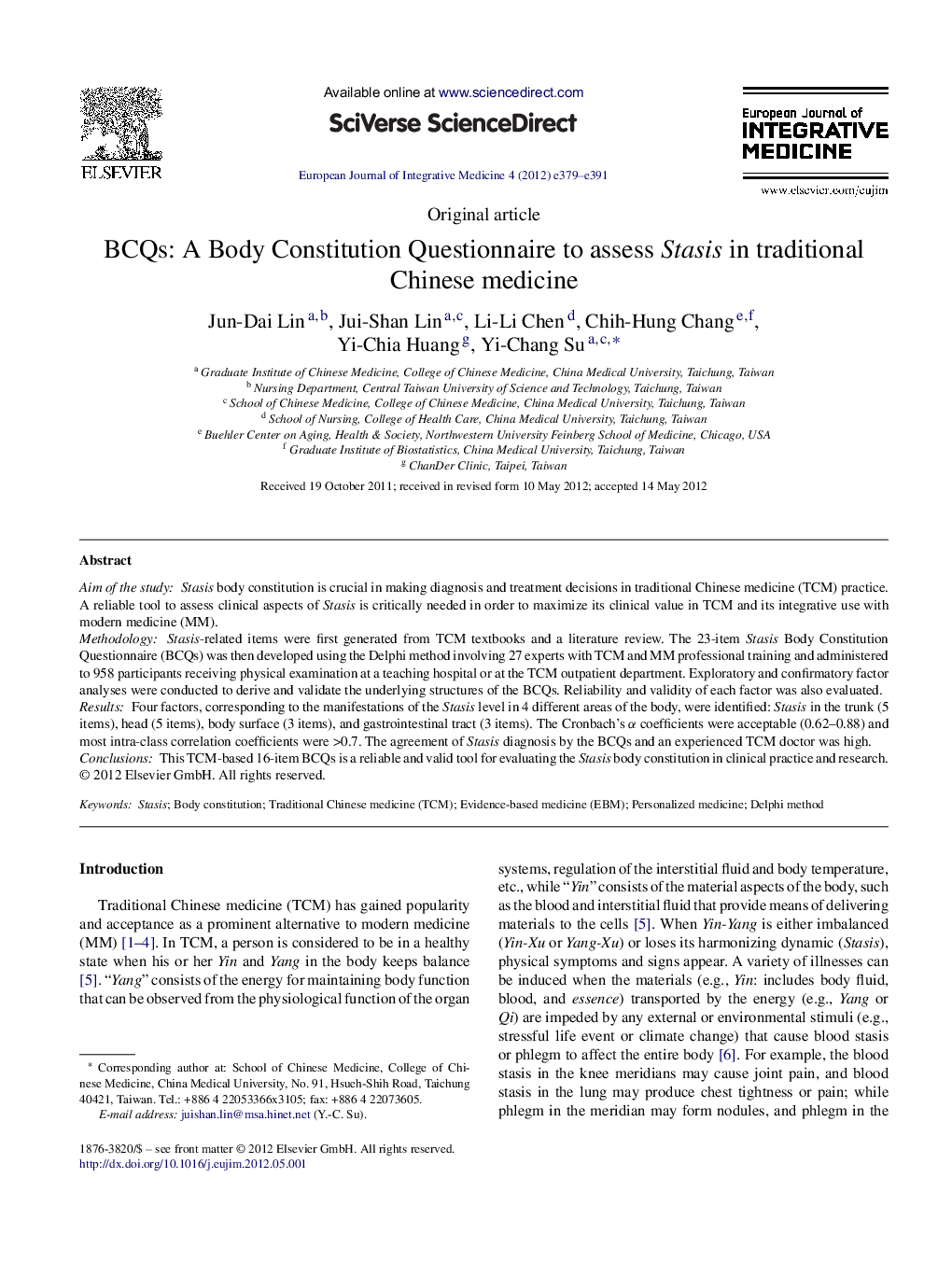| Article ID | Journal | Published Year | Pages | File Type |
|---|---|---|---|---|
| 5808302 | European Journal of Integrative Medicine | 2012 | 13 Pages |
Aim of the studyStasis body constitution is crucial in making diagnosis and treatment decisions in traditional Chinese medicine (TCM) practice. A reliable tool to assess clinical aspects of Stasis is critically needed in order to maximize its clinical value in TCM and its integrative use with modern medicine (MM).MethodologyStasis-related items were first generated from TCM textbooks and a literature review. The 23-item Stasis Body Constitution Questionnaire (BCQs) was then developed using the Delphi method involving 27 experts with TCM and MM professional training and administered to 958 participants receiving physical examination at a teaching hospital or at the TCM outpatient department. Exploratory and confirmatory factor analyses were conducted to derive and validate the underlying structures of the BCQs. Reliability and validity of each factor was also evaluated.ResultsFour factors, corresponding to the manifestations of the Stasis level in 4 different areas of the body, were identified: Stasis in the trunk (5 items), head (5 items), body surface (3 items), and gastrointestinal tract (3 items). The Cronbach's α coefficients were acceptable (0.62-0.88) and most intra-class correlation coefficients were >0.7. The agreement of Stasis diagnosis by the BCQs and an experienced TCM doctor was high.ConclusionsThis TCM-based 16-item BCQs is a reliable and valid tool for evaluating the Stasis body constitution in clinical practice and research.
